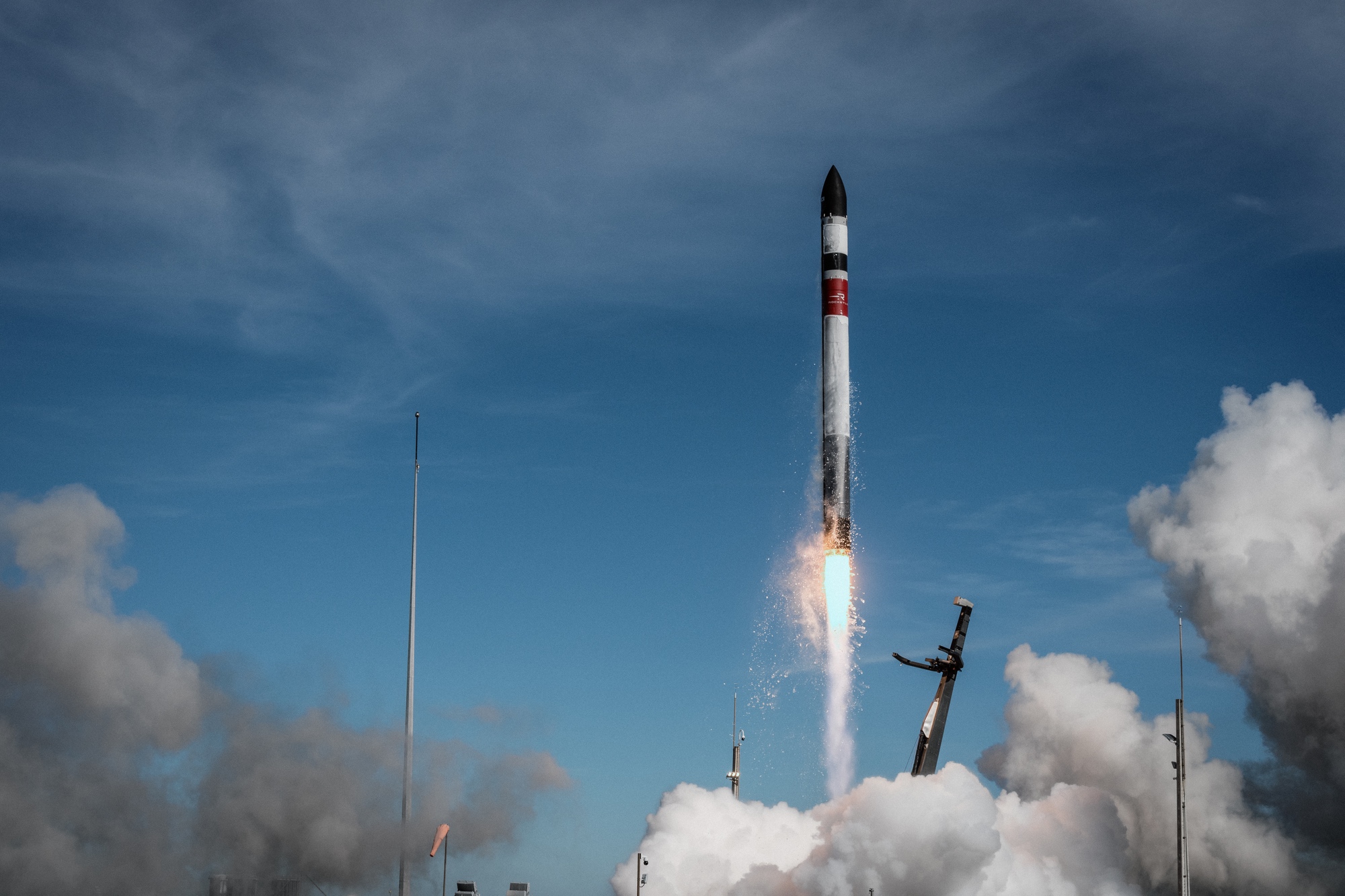Products You May Like
WASHINGTON — Rocket Lab launched a South Korean smallsat and a NASA solar sail experiment on the company’s fifth flight of the year April 23.
An Electron rocket lifted off from Rocket Lab’s Launch Complex 1 in New Zealand at 6:32 p.m. Eastern. Liftoff was delayed nearly 20 minutes because of a problem with ground equipment. The rocket’s kick stage, deployed from the upper stage nine minutes after liftoff, carried out a series of maneuvers to deploy its two payloads into different orbits.
The kick stage first moved into a circular orbit at an altitude of 520 kilometers, deploying the NEONSAT-1 spacecraft about 50 minutes after liftoff. The stage then moved into a 1,000-kilometer orbit before deploying the ACS3 satellite one hour and 45 minutes after liftoff.
NEONSAT-1, the primary payload of the mission, is an imaging satellite with a mass of about 100 kilograms. The spacecraft is part of a constellation of 11 spacecraft called New-space Earth Observation Satellite Constellation for National Safety, with the other 10 to be launched by South Korea’s Nuri rocket in 2026 and 2027.
The spacecraft, developed by South Korea’s Satellite Technology Research Center at the Korea Advanced Institute of Science and Technology, carries a camera system capable of taking images with a resolution of one meter. The South Korean government plans to use the satellite, and the later constellation, for civil and national security applications.
ACS3, or the Advanced Composite Solar Sail System, is a 12U cubesat developed at NASA’s Ames Research Center using a bus provided by NanoAvionics. After post-launch checkouts, the spacecraft will deploy a solar sail with an area of 80 square meters.
The primary purpose of ACS3 is to test new, lightweight booms made of composite materials and a deployment system for the sail, but if the sail is successfully unfurled the spacecraft will test its ability to maneuver using it. That required deploying ACS3 in a higher orbit to minimize the effects of atmospheric drag.
“The hope is that the new technologies verified on this spacecraft will inspire others to use them in ways we haven’t even considered,” said Alan Rhodes, lead systems engineer for ACS3 at NASA Ames, in a statement before the launch.
The launch was the fifth flight this year for the Electron, but the first in more than a month after a mission for the National Reconnaissance Office March 21 from Rocket Lab’s Launch Complex 2 in Virginia. Company executives said in an earnings call in February that the company has 22 Electron launches planned for the year, two of which are of its HASTE suborbital version.
